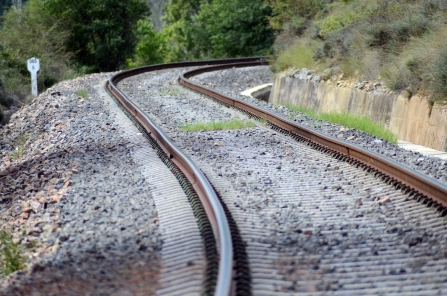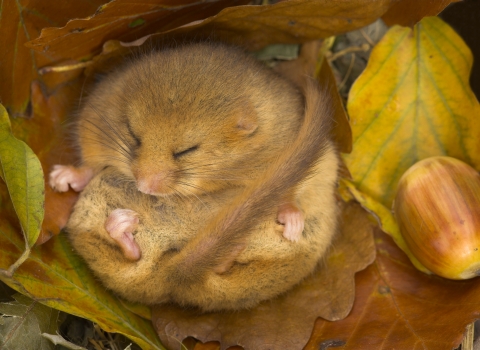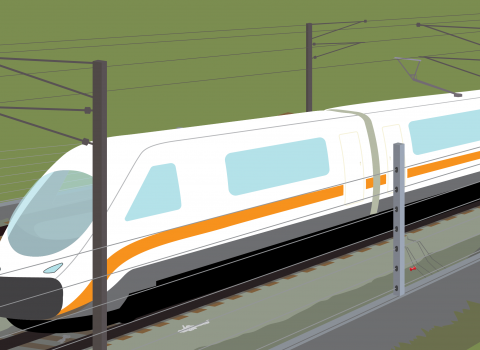HS2's impact on wildlife in Staffordshire
The Wildlife Trusts as a movement have long campaigned for a rethink of HS2. We understand the need for sustainable transport, but we strongly believe it can be delivered without it costing us the earth.
While we welcomed the news that HS2 phase 2a (Birmingham to Manchester) is no longer going ahead (in October 2023), we remain saddened by the huge and needless loss of rare and valuable habitat and wildlife in Staffordshire. The construction work for phase 1 and preparation work for phase 2 has caused damage can’t be undone. However, we were set to lose much more during future construction of phase 2a, so at least those places are now spared.
The biggest infrastructure programme in our lifetime inflicting catastrophic harm on wildlife
HS2 has caused irreparable damage to Staffordshire's precious wild places and threatened wildlife species.
Since the route was announced, Staffordshire Wildlife Trust have campaigned against inadequate HS2 plans to protect rare habitats and species along the route, rallying to influence decision-makers by presenting evidence to the House of Commons HS2 Select Committee on two occasions; and to the House of Lords on the Phase 2a Bill.
Phase 1 and 2 both impact Staffordshire. Construction near Lichfield (phase 1) HS2 has destroyed irreplaceable habitats such as veteran trees and ancient hedges. HS2 work continues to create a branch of phase 1 connecting Birmingham with Handsacre, near Lichfield.
Preparation works for phase 2 have also caused disruption to wildlife sites, but we’re yet to discover the true extent of this damage and what restoration work HS2 will now complete as the construction has ceased.
What Staffordshire Wildlife Trust has done:
- Surveyed the proposed routes to collect data, and where appropriate designated important wildlife areas that would have been affected.
- Compiled detailed responses to all consultations.
- Along with other ecologists from local councils, we met with HS2 Ltd to bring our experience, knowledge to get the very best deal for wildlife and the local people who enjoy experiencing it. We strived to ensure damage to the environment was avoided, mitigated, or as a last resort, compensated for.
- In 2020 we backed the HS2 – stop and rethink! campaign. The Wildlife Trusts ‘What’s the Damage’ report revealed the sheer scale of the damage HS2 is causing across the UK. You can read this report here or a summary of it here if you prefer.
- In spring 2023 The Wildlife Trusts released a miscalculation report detailing concerns about the huge risk to wildlife that the current route poses. After looking into the official HS2 nature loss calculations for almost a year, we found the numbers didn't add up. We asked supporters to sign an open letter calling on The Government to investigate this further and hold HS2 to account. So many of you agreed with us and we made all of your voices heard loud and clear by physically handing the letter into number 10 in late July, 2023. A big thank you to everyone who signed and shared this important letter.

Staffordshire wildlife and habitats affected by HS2
HS2 Phase 1
Woodland
The route for HS2 runs through one of the greatest concentrations of Ancient Woodland sites in Lichfield District. The most notable affected sites are Vicar’s Coppice, Ravenshaw Wood, Black Slough and Slaish, Tomhay Wood and Big Lyntus, a total of approximately 52 hectares (129 acres).
The wet woodland running parallel to the Trent and Mersey Canal, an important ecological corridor for a range of species including bats. They contained swathes of bluebells, yellow archangel and ramsons to drifts of lesser pond-sedge and yellow flag.
Wetland
The route bisects the Bourne Brook near the village of Hints. This watercourse and adjacent land incorporates approximately 38 hectares (94 acres) of designated wetland habitats.
Snake’s Hill and River Oxbow was an area of botanically-rich wet grassland, which is increasingly scarce both locally and nationally, while to the south and north are expanses of periodically wet grassland which attract wading birds such as lapwing and snipe.
Heathland
Whittington Heath – a 60 hectare (149 acre) lowland heath site situated in an ecologically significant area between Cannock Chase and Sutton Park.
Read our HS2 Phase 1 petition to the House of Lords
The HS2 Phase 1 Hybrid Bill went through both the House of Commons, and the House of Lords. We deposited a petition against the Bill to the House of Lords raising a number of outstanding wildlife issues that were not addressed.
Whittington golf course- HS2
Helping wildlife in the wake of HS2
HS2 is required to offset the environmental impact the construction project is having by funding work to restore damaged habitats. Working with other local NGOs, Staffordshire Wildlife Trust has lobbied for and secured more funding to help to lessen the blow by enhancing and protecting precious habitats through the Trent and Sow Washlands project.
Read more here.
More information and publications
Below you can read a variety of publications, which have supported our campaign work for a rethink of HS2.
Downloads
Hybrid Bill Petition - August 2019
Realignment of the route at junction 10 of the M42, North Warwickshire
HS2 Phase One Environmental Statement Consultation
HS2 Route Map
SWT HS2 Phase 1 Petition
HS2 Phase 1 Supplementary Environmental statement and additional provision 2 ES Consultation - SWT Response
HS2 Phase 2a EIA Scope and Methodology Report
HS2 Phase 2a 2016 Consultations – Working Draft Environmental Impact Assessment (EIA) Report
HS2 Phase 2a 2016 Consultations –Design Refinement Consultation
HS2 Phase 2A ES Consultation Response - September 2017
HS2 Phase 2A ES Consultation Response Main Points
HS2 Phase 2A Petition final SWT Feb 2018
HS2 Ltd Phase Two Consultation on the proposed high speed rail route from the West Midlands to Manchester, Leeds and beyond.

Credit: Danny Green/2020VISION
Support local wildlife
As a Trust we're committed to standing up for our county's wildlife but we can only do this with the help of our dedicated members - people who care as passionately about our wildlife as we do. Join those like you, who are helping their local wildlife by becoming a member.

